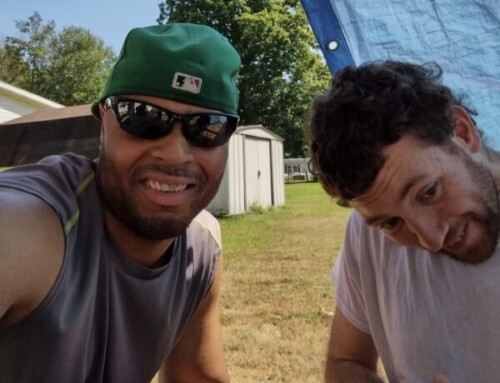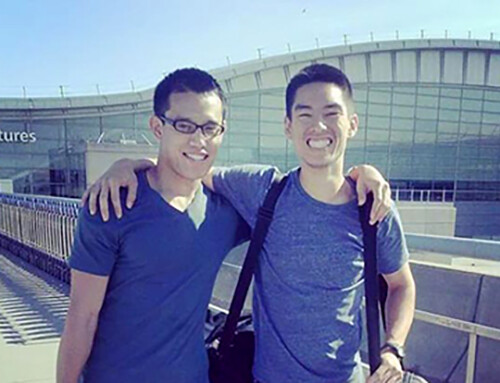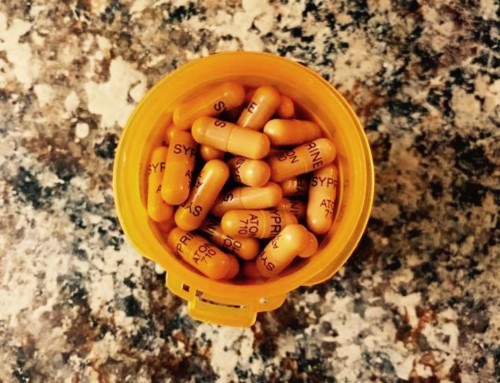Imagine practicing medicine without the internet.
In 1983, doctors relied on the medical books in their office or a nearby medical library for reference. Medical journals describing new scientific studies arrived through the mail. Then as now, they relied on knowledge remembered from medical school and from their experience treating patients, and they gleaned information shared at medical conferences. But there was no computer by a patient’s bed, sharing information between nurses and doctors — just a clipboard left at the hospital bedside to collect handwritten notes. And they didn’t have today’s digital databases where doctors can quickly look up symptoms and treatments.
Because I was admitted to a teaching hospital – a facility that not only treats patients but trains doctors and performs research – I had a whole group of young medical residents assigned to my mysterious case. Trying to figure out why I was in life-threatening liver failure, they carried around a handwritten list of 4 or 5 liver diseases that I might have, each with its own set of tests, requiring numerous vials of my blood.
But as the results rolled in, the residents could only cross disease names off the list – nope, nope, nope – because none of the tests pointed definitively to any one disease. My final test, a surgical biopsy confirmed that I had severe cirrhosis of the liver, but it still didn’t reveal a cause.
The young physician who was assigned to my case (and supervising all these residents) had been a doctor for only two months: Dr. John Hamilton a tall, dark-haired man whose kind and gentle manner my mother and I still remember. He never seemed rushed, and he took time to answer our questions.
On my fifth day in the hospital, after all these inconclusive tests, Dr. Hamilton delivered my diagnosis: non-A, non-B chronic active hepatitis. It wasn’t so much a diagnosis as names for a set of symptoms. They knew I had an inflamed liver, but they still didn’t know why. I was sent home with a prescription for corticosteroids to treat the symptoms. It was all they could offer me.
He told us he didn’t know how long I’d live. “It could be five years, ten years, perhaps more.” He said it might be best for me to quit college and go home.
Quit? Go home? I thought to myself, “I have too much work to do!” I was Panhellenic president, so I had campus sororities to represent! I had to start looking for a job! So, I compromised and dropped a few classes. I wasn’t scared, because I had confidence that if this was the hand I’d been dealt, God would see me through. I had peace about my future, even though it was uncertain, and even though I now knew I wasn’t invincible.
Meanwhile, Dr. Hamilton wasn’t satisfied with my diagnosis, so he continued his search to figure out what was causing my liver failure.
About a month later he called me back to the hospital for an eye exam. An eye exam? For liver failure? Well, it turns out that liver failure can be caused by too much dietary copper accumulating in the liver. Chocolate, shellfish, mushrooms, and nuts have a lot of copper. And in the rare genetic condition called Wilson disease, that excessive copper can also accumulate in the cornea and show up as a ring in the colored part of the eye. They’re not found in all people with Wilson’s, but these “Kayser-Fleischer rings” are only seen in people with Wilson Disease, so they’re a sure sign.
And I had the rings! We finally knew what was really wrong.
Wilson disease can also cause copper to accumulate in the brain leading to neurological or psychological symptoms. Some people have a combination of liver, neurological, and psychological symptoms making it even more challenging for doctors to diagnose correctly.
It would be years before I realized just how fortunate I was to get a diagnosis for my rare disease within less than 6 months, after seeing only 2 doctors. On average, it takes about 5 years, 3 wrong diagnoses, and 7 different physicians before getting a correct diagnosis for a rare disease, which doesn’t always arrive in time to save a person’s life.
With the correct diagnosis, I could also get the correct treatment. Sadly, it’s estimated that 95 percent of rare diseases don’t even have one treatment that works!
Did those martinis save my life? They were my tipping point for a diligent young doctor to put the puzzle of my diagnosis together and save my life.




